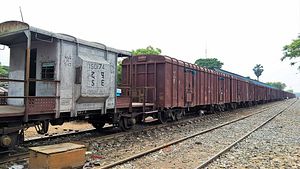The Joint Study Group (JSG) of the Bangladesh-China-India-Myanmar Economic Corridor (BCIM) concluded its third meeting on April 26. The two-day meeting in Kolkata, India, revolved around each country sharing their revised reports on the BCIM. The member countries submitted four separate reports involving 11 sectors for consideration by the respective governments, including general principles on objectives and modalities; connectivity; energy; investment and finance, trade, and trade facilitation; human resource development; sustainable development; and the institutional mechanisms required to implement the recommendations.
However, differing agendas, purposes, and viewpoints between the grouping’s two giants, India and China, continue to hold back progress on the BCIM initiative. Although India may view that outcome as favorable to its position, the end result is that the development of the subregion continues to be stunted.
The China-India Factor
The main conflict between India and China within the subregional initiative was highlighted by the statements given by the Indian and Chinese representatives.
In the meeting’s opening speech, Indian External Affairs Ministry Additional Secretary A. Gitesh Sarma pushed for caution, stating, “We should be mindful of different domestic circumstances and developmental aspirations in our respective countries.” Sarma added, “While we focus on expanding trade volumes, equal attention should also be paid to its sustainability. Greater access to each other’s markets is desirable to achieve more viable and sustainable trade cooperation in our region.”
The Chinese head of the delegation, Wang Xiaotao, who also serves as the vice chairman of China’s National Development and Reform Commission, wanted concrete progress. “There is a need to put in place an Inter-Governmental Cooperation Mechanism for the success of the proposed initiative,” Wang said. China’s aim with this meeting was almost certainly to finish with the business of report-making; China’s delegation had even made a draft of the Inter-Governmental Cooperation Mechanism. However, the draft was not tabled before the members of the JSG.
While acknowledging the issues raised by India, both Bangladesh and Myanmar said that they are open to beginning construction of connectivity infrastructure in the subregion. The head of the Bangladeshi delegation, M. Riaz Hamidullah, stated that increased integration and connectivity in the region will play a vital role in strengthening cooperation among these countries to achieve development objectives. The Myanmar delegation, led by U Win Lwin, emphasized that “the corridor would also give trade opportunities by opening up land-locked areas of the region.”
For now, it has been agreed that the next JSG meeting will be held in Myanmar in 2018. A final joint study report will be prepared based on the individual country reports and discussions during this 2017 JSG meeting. The modalities of an inter-governmental framework agreement will be worked out on the basis of reports by all four BCIM countries.
The Conflicts in the Corridor
The differing viewpoints expressed by the delegates highlight the main issues in economic relations between India and China. The statements made by Sarma hint at India’s fears that the BCIM is a mechanism designed to simply facilitate Chinese imports of natural resources and exports of processed goods to the region. India’s massive trade deficit with China continues to be a factor in India’s consideration of the BCIM. In the last six months, India has repeatedly brought up the hurdles faced by Indian IT services, pharmaceuticals, and rice exports in Chinese markets.
India has also brought up the issue of focusing on subregional development. India’s report specifically brought up the development deficit of the northeastern region, and particularly of the securitized border districts. At the same time, there is an emphasis on acknowledging Bangladesh and Myanmar as the least developed countries within the grouping.
Contrary to India’s cautious position, China is looking for immediate action and commitment to the initiative. China may be facing greater domestic pressure over bringing its Belt and Road Initiative, of which the BCIM is a part, to fruition. The Chinese delegation highlighted the fact that the decision to create an Inter-Governmental Cooperation Mechanism was taken about 28 months ago. The reports presented in April were commissioned during the very first meeting in 2013 in Kunming, China. After the 2014 meeting in Cox’s Bazar, Bangladesh, each country was tasked with “merging” or “synthesizing” specific chapters, which were presented for discussion. As Wang’s statements at the 2017 meeting showed, China is certainly ready to begin with Inter-Governmental action.
Taking the Corridor Forward
India is bent on insisting that the subregion’s development be taken into consideration while China is eagerly seeking out any sort of Track I acknowledgment by India. In terms of outcomes, little that took place at this edition of the JSG meeting, nor was there any significant change in the stances of the four countries.
That being said, the importance of the 2017 meeting should not be understated. The very fact that there has been activity on the BCIM front after three years of near silence is an encouraging sign for the corridor and the subregion. Progress now depends on whether the grouping abides by the agreed timetable for the finalization of the joint report, its acceptance by the respective governments, and the formalization of the agreed mechanisms for implementing the recommendations.
In the mean time, the Chinese side is eager to identify “early harvest” or pilot activities to build confidence and create a demonstration effect. For now it will be interesting to see whether India is keen on engaging with China, while keeping the development of the subregion at the forefront.
Roshan Iyer is a Research Assistant at CUTS International working on the regional integration of India’s eastern neighbors.

































